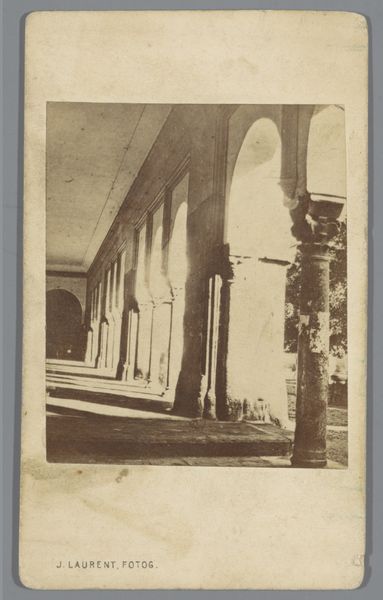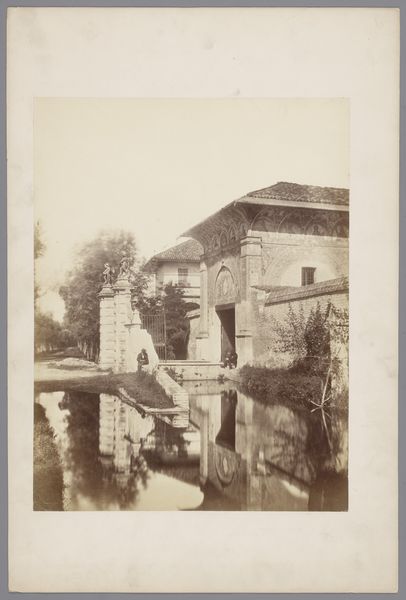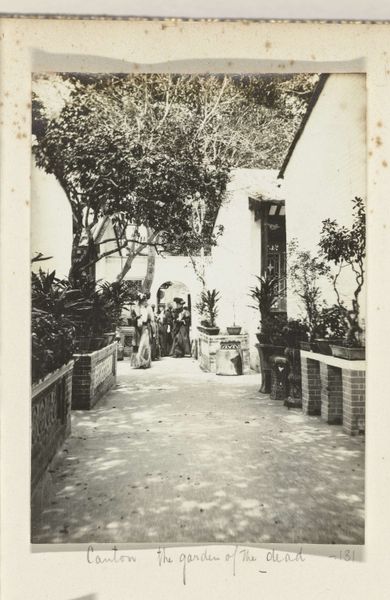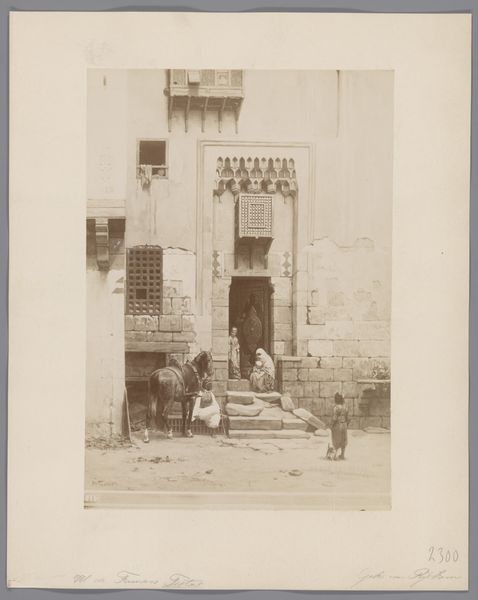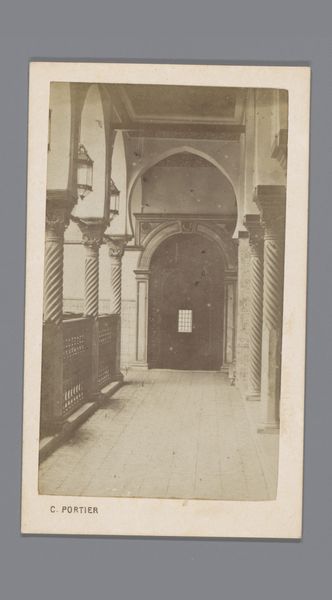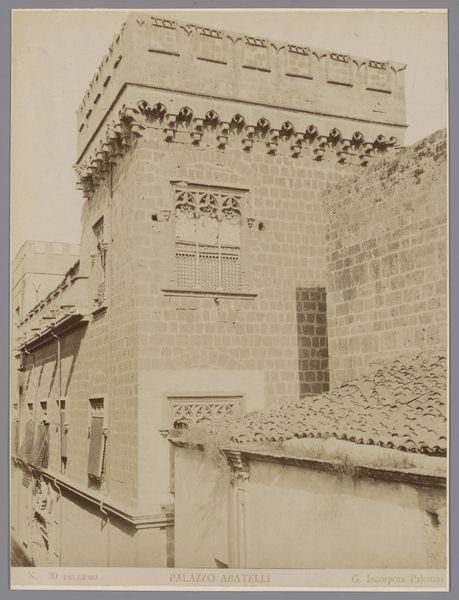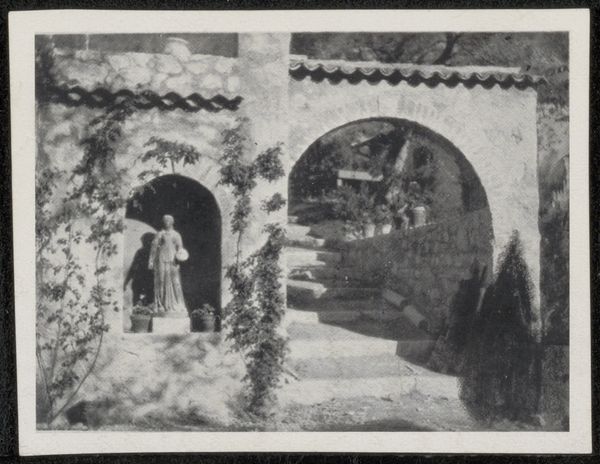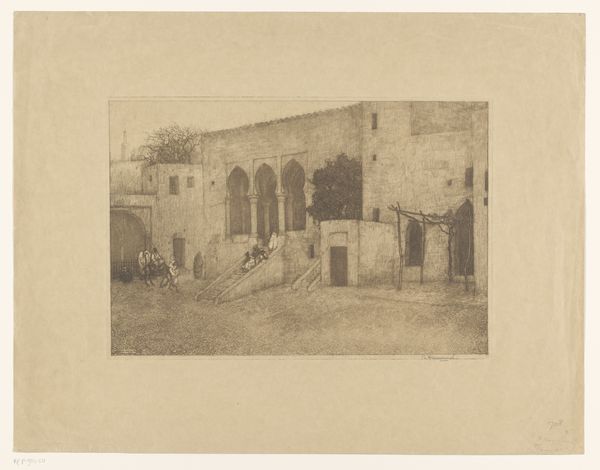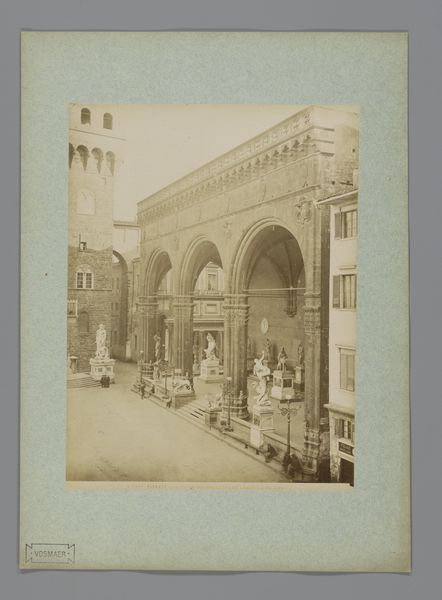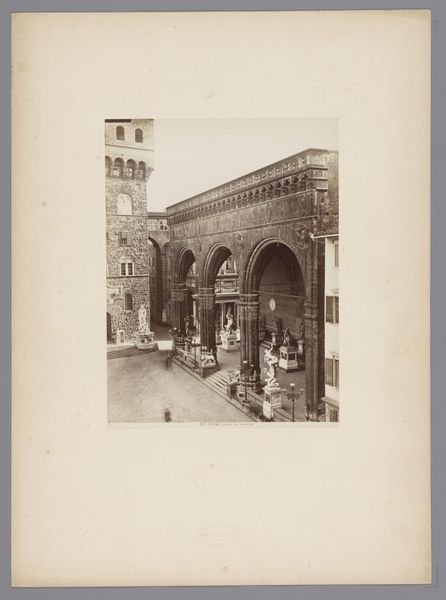
photography, gelatin-silver-print
#
landscape
#
photography
#
orientalism
#
gelatin-silver-print
Dimensions: height 105 mm, width 63 mm
Copyright: Rijks Museum: Open Domain
Curator: Looking at "Gebouw bij een begraafplaats, Algiers," a gelatin silver print from sometime between 1863 and 1882 by Claude-Joseph Portier, what's your immediate take? Editor: Bleak elegance, maybe? It's incredibly washed out, almost ghostly, but there's something serene in the composition, the geometry of the architecture contrasting with the soft forms of the figures. There's something in its stillness, it's quite haunting. Curator: It’s a photograph operating in the visual language of Orientalism, the European fascination with the "East." How does that sit with you given its mood? Editor: Well, it could be exploiting a romanticized version of a foreign place, sure. But to me it reads more like quiet observation, less spectacle, more intimate. The light almost feels reverent, unifying everything in this hazy stillness. Look at how the veiled woman almost merges with the architecture, losing its specificity, gaining ubiquity. It reads more of personal mourning than societal observations. Curator: Note how the figures, rendered nearly as silhouettes, blend into the landscape and architecture. Do you believe this emphasizes cultural difference, perhaps the exotic "other," or might it be something else? The headstones themselves appear almost like human forms, blending into the building and woman in their simple, white covering. Editor: I think it actually dissolves the boundary between observer and observed. Portier invites us into a space of shared contemplation, of loss, instead of underlining difference. The building’s simple geometrical lines point to its human utility as a tomb while the natural foliage encroaches from all sides – softening what could otherwise be sterile forms, speaking to the cycle of birth, death, and decay. What do you read from that balance? Curator: It's definitely a tension between imposing cultural perspectives, Orientalism at large, and some shared aspect of death. It gives us much to ponder: how history shapes our perception and what, beyond all that, might be universal. Editor: It’s strange how a seemingly simple photograph can spark so much complexity, and I appreciate that challenge to not taking visual imagery as the immediate, explicit intent.
Comments
No comments
Be the first to comment and join the conversation on the ultimate creative platform.

